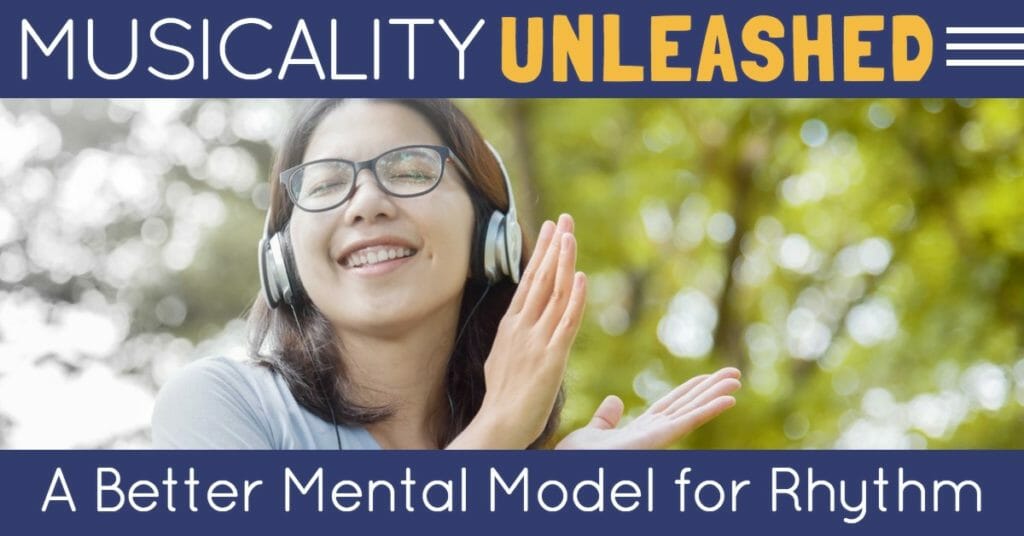This episode is part of the Musicality Unleashed series. Learn more and get a bonus “cheat sheet” at musicalityunleashed.com. In this episode, we share an intuitive model for counting rhythm: rhythm syllables! Learn why this method trumps the “1-e-and-a 2-e-and-a” method by a mile.
Listen to the episode:
Subscribe For Future Episodes!
Enjoying the show? Please consider rating and reviewing it!
Links and Resources
- Talking Rhythm: The Kodály Method
- Talking Rhythm: Syncopated Rhythms and the Kodály Method
- Musicality Unleashed: A Better mental Model
Enjoying Musicality Now? Please support the show by rating and reviewing it!
Transcript
If you’re like most musicians, you’ve wanted to play by ear but found it didn’t come naturally to you. But what you might not have realised is that of the two major aspects of music, pitch and rhythm, it’s actually only the pitch that you really struggle with.
If you’ve been playing music for a while then the chances are good that your ability to mimic back a rhythm are actually really solid.
Try it now – clap or tap this rhythm back [clapping followed by pause]
So you have the rhythm instinct – but could you write that down in notation? Or if you saw the rhythm notation, would you know how to clap it or play it?
There’s clearly a piece missing – and that’s having the right mental model to interpret and understand what you’re instinctively able to do.
You probably think about rhythm in terms of counting beats: 1, 2, 3, 4 or “1 and 2 and 3 and 4” or even “1 ee and a 2 ee and a” and so on.
That’s understandable – it’s the way we’re taught rhythm in traditional music education around the world.
And it’s a fine system.
But clearly it isn’t enabling you to write down the rhythms you could clap back by ear, or perform them from sheet music – at least not without stopping to slowly and carefully think through the 1-e-and-a of it all!
So there’s some kind of mismatch between how our brains are understanding rhythm and how we’re consciously thinking about it.
What if we could put in place a mental model that let us leverage that instinctive understanding of rhythm to actually know exactly in terms of notation and note durations, what’s being played?
That would empower us to write rhythms down or read them from sheet music easily, as well as enabling greater freedom to improvise or compose our own rhythms.
It turns out there is just such a system, called “rhythm syllables”.
In this mental model you have particular spoken patterns which correspond to particular rhythmic patterns.
For example that pattern I clapped before (clap) would actually be “ta ti-ti tika-tika ta”
It may sound like nonsense syllables – but there’s a carefully-thought-out system to it all, and when you’ve learned it and practiced a bit, any rhythm you hear automatically just gets translated in your head to the corresponding rhythm syllables and that lets you easily write them down.
And the reverse works too: you can look at the notation, know the rhythm syllables and then be immediately able to speak, clap or play the right rhythm.
This is compatible with counting rhythms so although it can be used independently, for most musicians it’s an amazing sidekick for counting which suddenly gives greater insight and understanding of all the rhythms we understood instinctively but couldn’t make sense of intellectually.
Learning rhythm syllables gives you a new mental model which can empower you in a new way in music. We’ll talk more about mental models and putting a new foundation in place in the rest of this Musicality Unleashed series.
Subscribe For Future Episodes!
Enjoying the show? Please consider rating and reviewing it!







